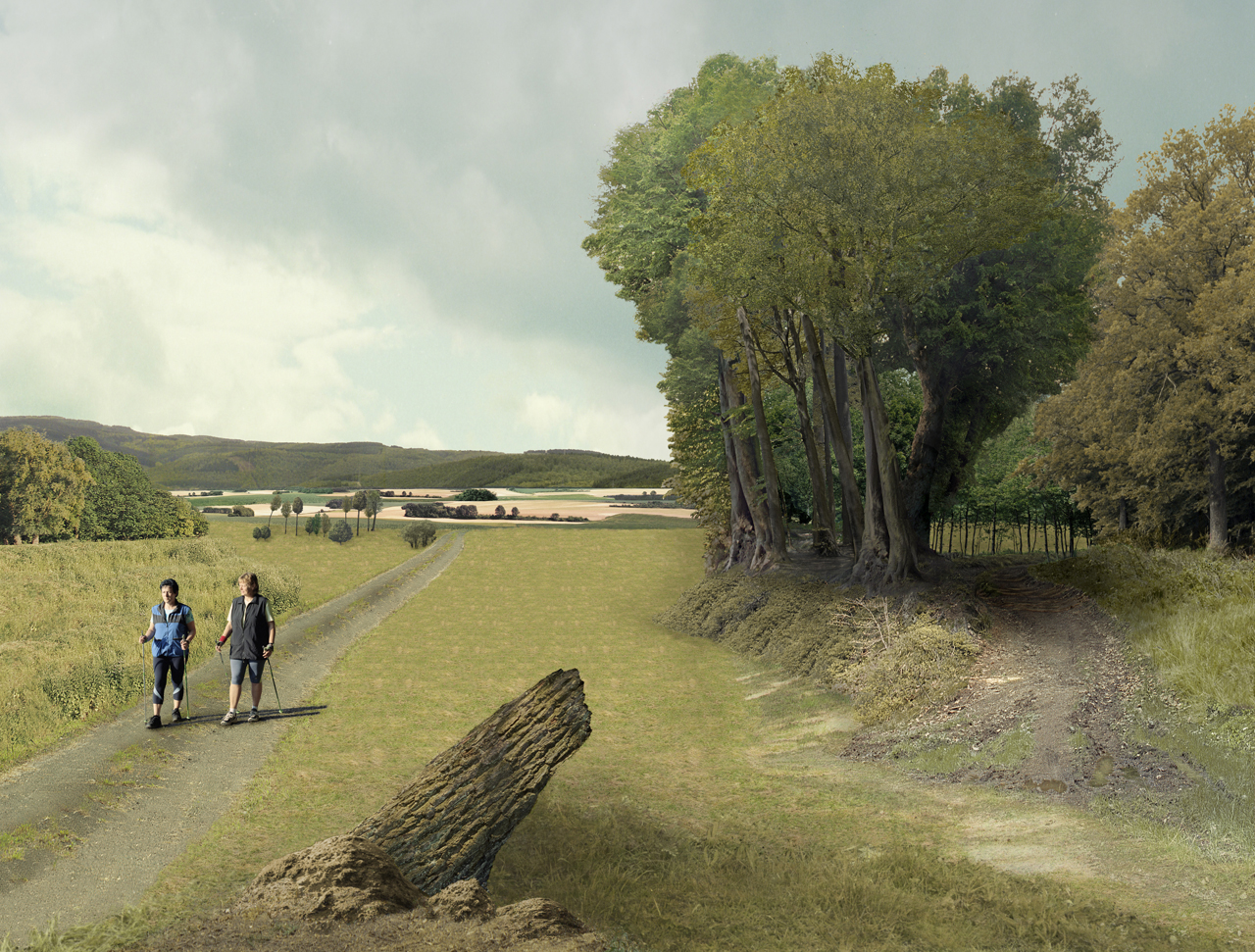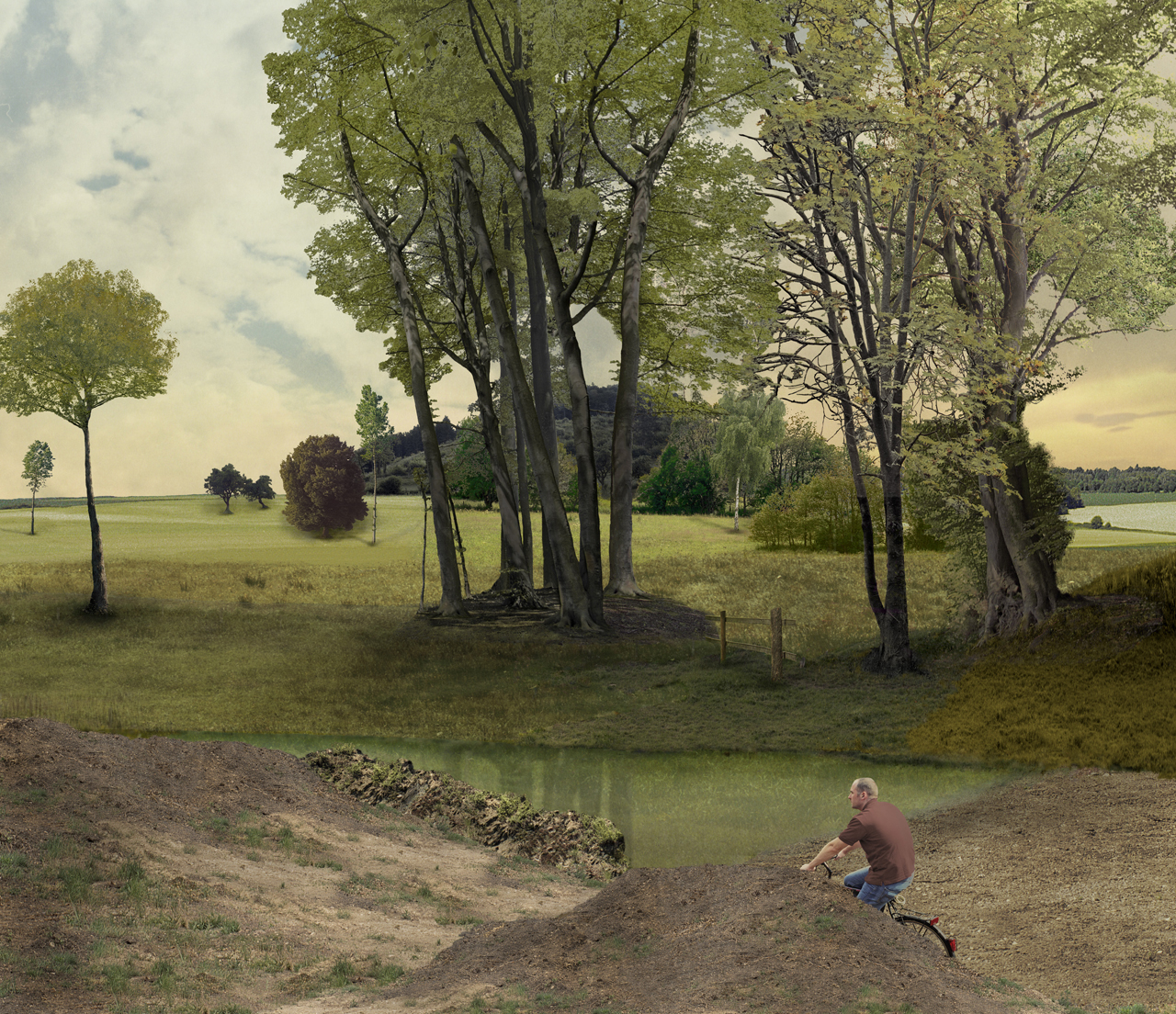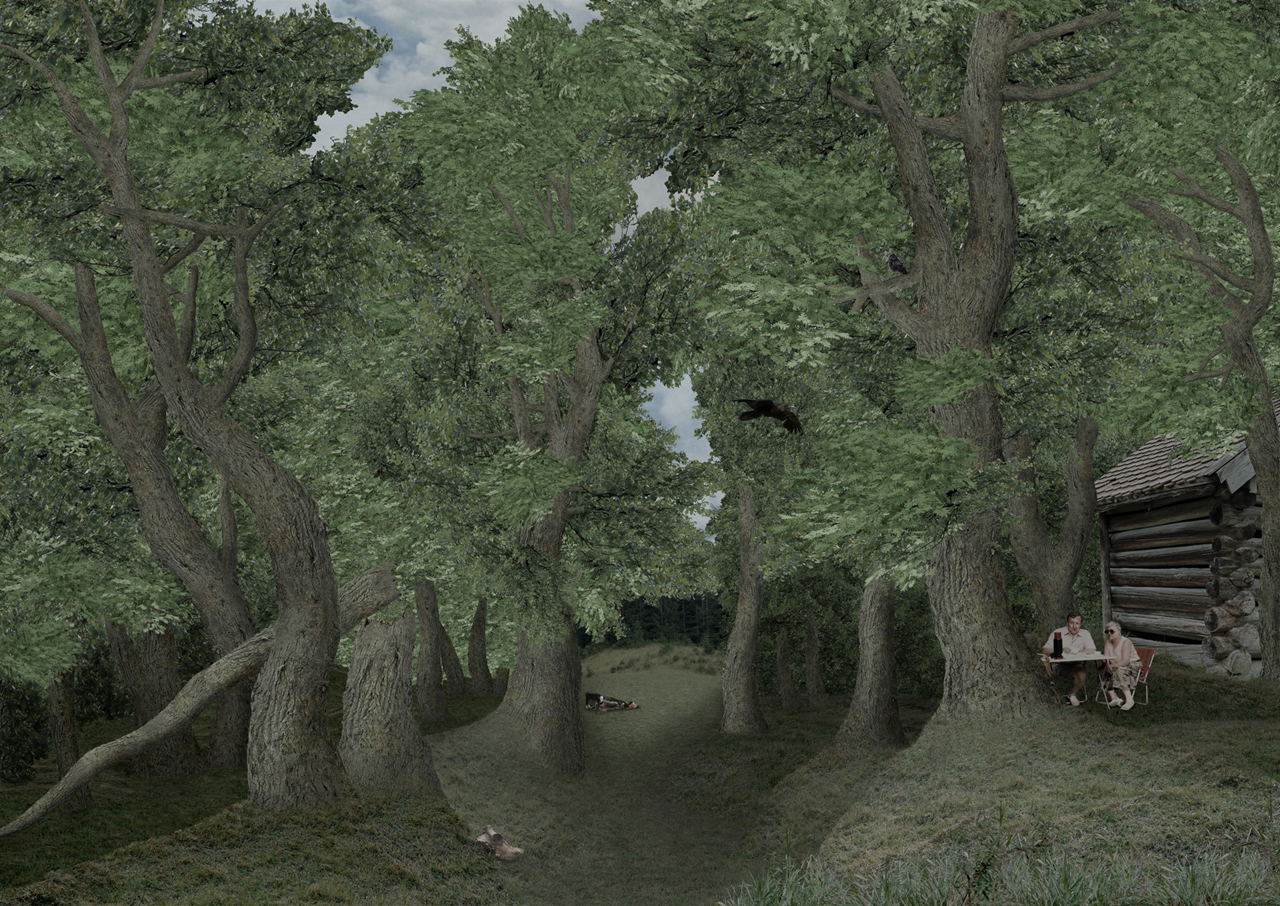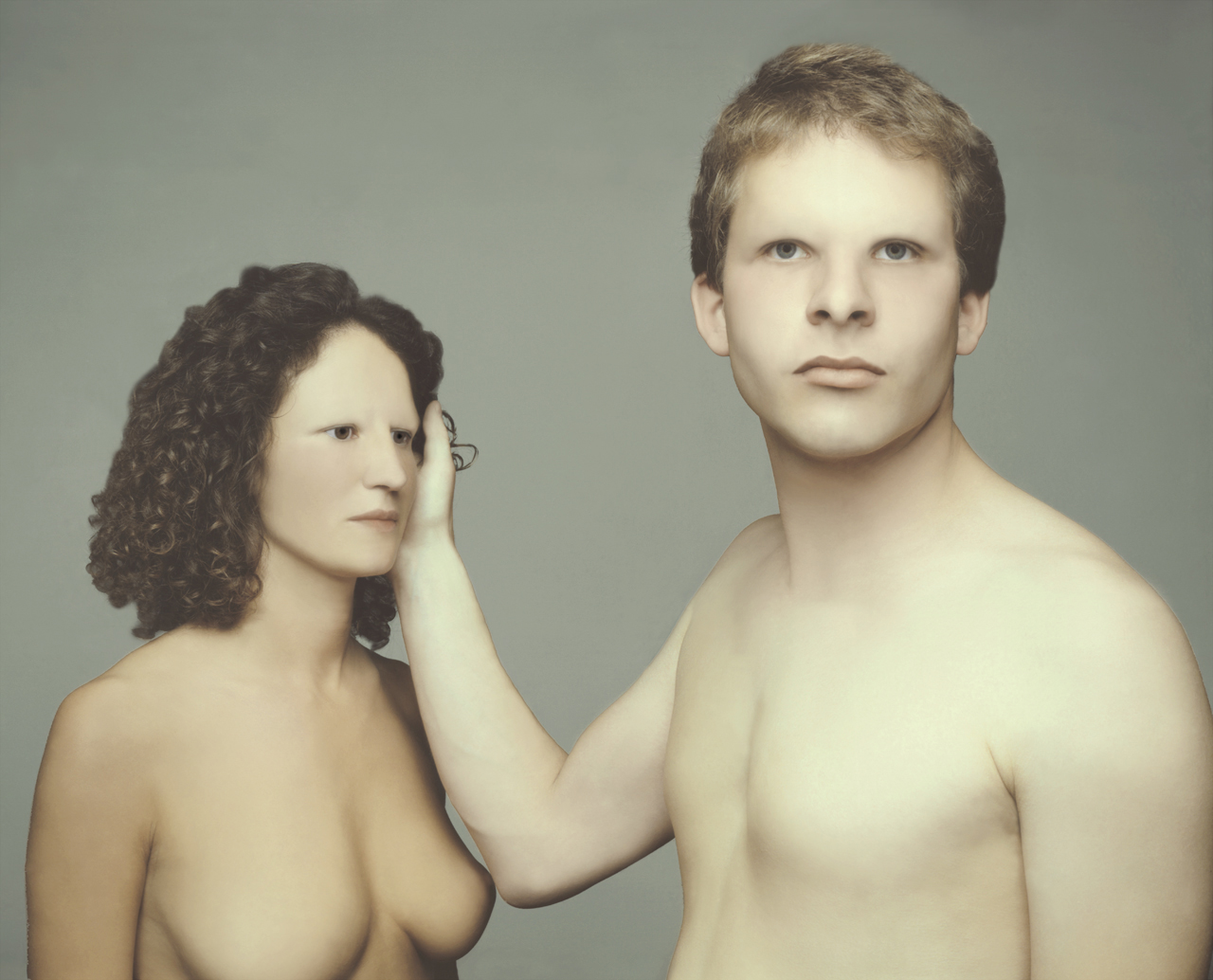at Length
Marc Baruth
photography by Marc Baruth
interview by Darren Ching and Debra Klomp Ching
 After the Thunderstorm, 2005, from The Prodigal Son
After the Thunderstorm, 2005, from The Prodigal Son
At Length: You have stated elsewhere that the two main themes of your photography are reality and communication. Can you expand on that?
Marc Baruth: Reality is always mere allegation, and in my works, I absolutely deny constructed reality, which may at best be found in the representation of a tiny, actually photographed element. From this accumulation of small, ‘real’ elements comes something which presents itself as reality or at least something clearly defined, like a landscape painting. With the recognition that this is not the case comes the recognition of some sort of ‘deceit,’ of a disturbance in the communication between author and spectator.
This flawed form of communication can be seen in New Morning (in the relationship between humans and humans) and The Prodigal Son (in the relationship between humans and nature). In the latter series, there is no communication left at all.
AL: The Prodigal Son is inspired by and clearly references the painter Peter Paul Rubens. Why is this?
MB: When I was looking for a diploma topic in 2005, only the two aspects of ‘landscapes’ and ‘digital manipulation’ were fixed. It also seemed appropriate to look towards classic painting, partly because New Morning had already referenced the traveling painters of the Renaissance.
Rubens came into play because he is a significant factor in the self-marketing of the town of Siegen (Germany)—without having ever actually lived and worked here. Siegen is merely his birthplace. To me, this kind of marketing always felt slightly desperate, and I wanted to address that in The Prodigal Son too—even if just on a secondary level.
The images of the series are composed of individual photographs taken in Siegen and in Flemish Brabant, the region in which Rubens spent the last years of his life, and where he painted most of the landscapes that inspired my pictures.
 Cows, Shepherds and Duckhunters, 2007, from The Prodigal Son
Cows, Shepherds and Duckhunters, 2007, from The Prodigal Son
AL: Do you feel you have any special affinity with Rubens, having been born in the same town of Siegen?
MB: Not with Rubens himself, and not necessarily with his complete work either. I certainly have an affinity with his late-period landscapes, and I understand the way in which the hard working people of the country must have made an impression on the diplomat Rubens in the last years of his life, to the extent that this topic became his passion.
I never wanted to move to a bigger city; it has always been more important to me to live close to nature, especially the woods.
AL: What is your response if someone asks why you reference historical paintings and not historical photographs?
MB: Because I greatly appreciate classical paintings in spite of having studied photography. When looking at a picture or painting, I want to be drawn into it, I want to be told a story and to be able to continue it. Many old works of art are incredibly detailed, allusive and referential, and I’ve always enjoyed them a lot because of that.
Another important aspect is the opportunity to remove the boundaries between painting and photography. I can use the individual pictures I take for my works like painters use their color palette.
Also, I have a tendency to lose interest in things that I have not discovered, and become fascinated with, by myself. Unfortunately, the history of photography is—in part—one of these things. I will not deny its significance, but it does not interest me to the same extent that classical painting and large sections of other contemporary arts do.
AL: Which photographers inspire you?
MB: That’s a tough one—I find greater inspiration in classical painting or contemporary art in various media. Jake & Dinos Chapman and Paul McCarthy are artists whose work I regard very highly. I don’t consider them provocative; rather, I admire the way they integrate references from the history of art and culture, and transform these into something personal.
 Evening, 2005, from The Prodigal Son
Evening, 2005, from The Prodigal Son
AL: Your photographs are at once seamless, yet they exhibit numerous visual signs pointing to their artifice. The balance between the two must be difficult to achieve. What is your process of making the images and decision-making, in terms of your use of scale, light and the different components?
MB: I deliberately distanced myself from the original with regard to aspects like scale and light, and relied more on my intuition. I chose the individual elements for their effect and flexibility; aspects like focus and a photo’s scale in relation to the other elements were ignored. The resulting impact of the whole image surprised, amused and confused me equally. Ultimately, it felt ‘right’ and could not be classified at first glance.
Ultimately, I want the viewer to become increasingly aware of the ‘flaws’ in the picture as his spatial distance from it decreases.
On a technical level, I do appreciate mere detailed depiction that cannot be recognized as artifice, but it frequently lacks the storytelling element. I miss the areas of contact.
My works do not always develop in the same way, but most of the time, the process begins with the collection of images which may be used later on. For The Prodigal Son, these images were only landscapes painted by Peter Paul Rubens, for New Morning, only renaissance status portraits; for my current works I am working with a variety of influences for the first time.
Collecting is followed by sketching, attempting different color schemes, and assembling individual, re-usable elements.
With The Prodigal Son, I took great care to follow the original’s composition as precisely as possible, as that was the only way which could result in the confusion/vexation that I have described.
 The Avenue, 2005, from The Prodigal Son
The Avenue, 2005, from The Prodigal Son
AL: How long did it take to complete The Prodigal Son and what were the main challenges?
MB: It took close to 6 months to complete. Certainly, the greatest challenge was the pictorial formulation of a convincing topic, and the subsequent balancing of direct and subtle depiction.
It may sound strange, but I don’t really like taking pictures. I mostly photograph ‘in one piece,’ within a fixed, manageable period of time. Usually, this doesn’t take long, and then I can focus on doing what I prefer by far: collecting, sketching, and working digitally.
AL: Your earlier series, New Morning, is quite different from The Prodigal Son, yet you have maintained an interesting color palette between the two which connects them visually. How else do they connect?
MB: With New Morning, the co-author of this series, Bozica Babic, and I chose the color palette deliberately to achieve a cooler, starker impression which at the same time, possesses a certain patina that refers to its precedents in classical painting. Here, the ambivalence of what is being depicted and the mode of depiction was very important, too.
For The Prodigal Son, I aimed for a similar coloring, which radiates a certain lifelessness as a result of being almost monochrome. It was not supposed to be too ‘comforting.’ More apparent similarities between the two series are the fact that both were processed/manipulated digitally and have similar topics.
AL: With an expanded field of technological tools, there appears to be a resurgence in the practice of photo assemblage. Where do you see our work within this context? Will your future projects continue existing themes and use of assemblage?
MB: I find it hard to say where I see my work. It certainly does not show anything completely new, but I do think that it may be different from similar series/works due to the ambivalence I mentioned earlier.
After completion of the new series Old Land—which is not too dissimilar from The Prodigal Son, I would like to focus a lot more on the reduction of the individual elements. I have just begun with just that in The Hermit’s Cell—and I believe that this could be a rewarding experiment.
The works following Old Land will also have reduced amounts of references to existing works of art.
AL: In an ideal world, what response do you hope for from people when they see your photographs?
MB: To be honest, I hope that people/the viewers enjoy the pictures on the one hand, and on the other perhaps recognize their haunted quality.
 The Hermit’s Cell, 2010, from Old Land
The Hermit’s Cell, 2010, from Old Land
AL: Your most recent image The Hermit’s Cell shows a slight darkness in emotional tone, as well as a sense of movement. Is this an indication of the direction your work will be taking in the future? How has the overall concept of your work altered in this new image?
MB: Yes, The Hermit’s Cell defines the direction. As mentioned earlier, the pictures are now based on a variety of influences and references, such as private photos, film stills and a number of classical works. The images’ considerably more cramped composition and the reduction of elements are important here.
In spite of this, the picture appears to be denser and more self-contained, and to have much more plasticity and depth.
The images are not about variation of individual elements, but about the multiplication of very few elements. As a result, there is a kind of movement in The Hermit’s Cell which, in this case , is also a result of the picture’s composition.
Thematically and imagery-wise, the new pictures will be darker than The Prodigal Son, although parts of that series already hinted at such a direction. The deaths of my parents certainly play a (subliminal) role, and places we visited together when I was a child can be found in the basic natural elements—most of which were made in the Alps of Southern Bavaria.
AL: What are you working on now?
MB: Right now, I’m working on the next picture in the Old Land series, which will be based on Carl Blechen’s picture The Building of the Devil’s Bridge, amongst other things. The ‘material,’ i.e. the reduced individual elements, will consist almost entirely of different stone and rock formations.
Additionally, I’m currently working on further sketches, and their presentation as part of a group exhibition at the end of the month.
To see more work by photographer Marc Baruth, please visit his website. All images © Marc Baruth.
